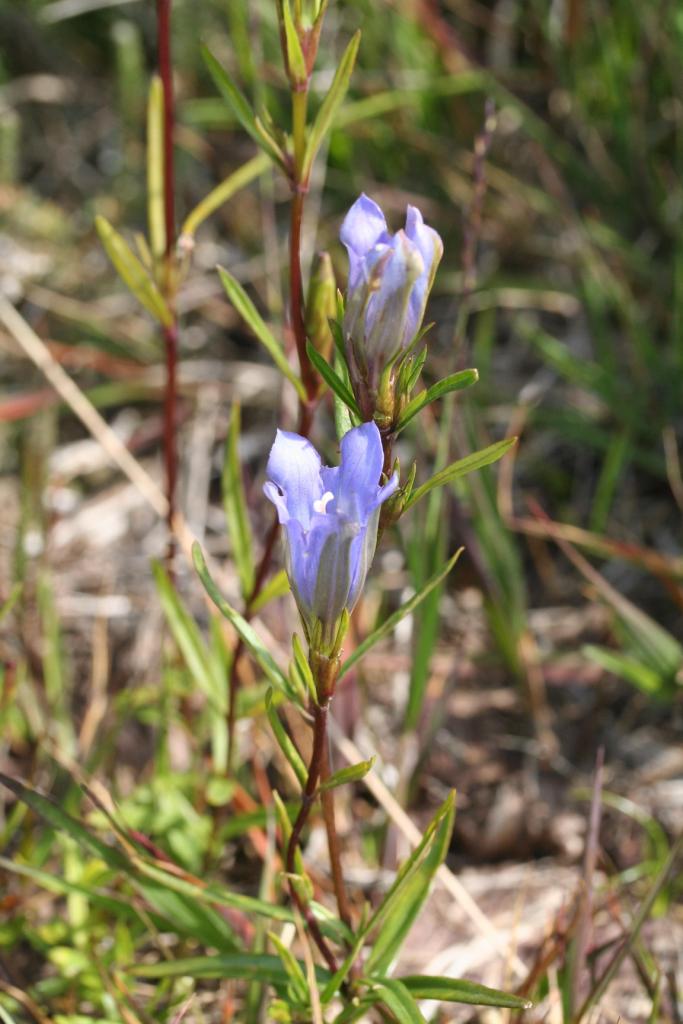
CRAIG WEN/CORS CASTELL SITE OF SPECIAL SCIENTIFIC INTEREST
MANAGEMENT STATEMENT

What is ‘special’ about Craig Wen / Cors Castell SSSI?
Craig Wen / Cors Castell has 5 special features.
Wet heathland, characterised by common heather and cross-leaved heath (Craig Wen).
Dry heathland characterised by bell heather and western gorse (Craig Wen).
Lime-rich fen (Cors Castell).
Lime–rich grassland (Cors Castell)
Marsh gentian and pale heath violet
As well as the features listed above, Craig Wen / Cors Castell has other habitats that contribute to the special interest. These include wet flushes (lime-rich, neutral and acidic), scrub, hedgerows, streams, ponds and small rock outcrops. This mixture of habitats is important for much of the wildlife and these too are a key component of the special interest of the site. Unless specified below, management should aim to look after these habitats as well as the listed features of interest
In the long term the site should continue to have at least 2.9 ha of dry heath characterised by bell heather and western gorse and 4.5 ha of wet heath, characterised by cross-leaved heath, western gorse and marsh gentian. These areas should be maintained to contain heath of various ages and include between 10% and 20% of short lichen turf or bare ground, which will allow marsh gentian and pale heath violet to thrive. The calcareous grassland, characterised by rock rose, salad burnet, thyme and sheep’s fescue, should be maintained at a minimum of 0.25 ha and should support green winged orchid. Water pathways should be maintained so that in some places water floods the surface forming flushes which are characterised by black bog rush.
What management is needed on Craig Wen / Cors Castell SSSI and why?
Although Craig Wen / Cors Castell is an excellent place for wildlife it will only remain so if the necessary management continues. CCW’s aim is to work with you to ensure that this management is carried out.
What does this mean in practice?
There are many factors that could damage the special features at Craig Wen / Cors Castell if they are not properly managed. These are the ones we regard as most important:
Grazing: Light grazing encourages the development and maintenance of dwarf shrub heath by removing excess herbage (and thereby nutrients). Cattle and horses are to be preferred as they are less selective in their grazing habits than sheep, permitting more plants to flower and set seed, whilst also breaking up dense clumps of gorse. They also produce minor poaching of the ground enabling seedlings to establish. The areas of calcareous grassland and fen also need light grazing to remove herbage and to prevent scrub encroachment. Animal dung provides an important food resource for some invertebrates.
Burning: Fire rejuvenates heather and gorse and can help reduce soil fertility. Controlled small patch burning during the winter should be carried out where appropriate. Fire-breaks are essential to maintain control of the fire and prevent the spread of wildfires which can cause serious damage to invertebrate and reptile communities.
Nutrients and fertilisers: Low soil fertility helps heather, western gorse, the lime-rich grassland and fen to compete against more aggressive agricultural grasses. The application of any fertiliser or slurry should be avoided and animals should not be fed with silage on the site.
Water level: Maintenance of the wet heath, fen and flushes will rely on maintenance of current water levels and pathways. Drainage ditches should not increase in depth/width and should also be prevented from overgrowing/blocking.
Finally
Our knowledge and understanding of wildlife is continually improving. It is possible that new issues may arise in the future, whilst other issues may disappear. This statement is written with the best information we have now, but may have to change in the future as our understanding improves, in particular, of the possible/probable impact of climate change. Any information you can provide on the wildlife of your site, its management and its conservation would be much appreciated.
Your
local office is:
Countryside
Council for Wales
North
Wales Region
Llys
y Bont
Ffordd
y Parc
Parc
Menai
Bangor
Gwynedd
LL57
4BN